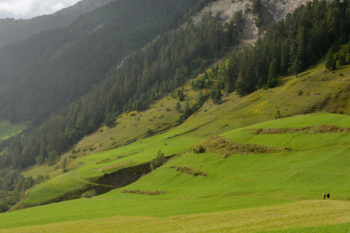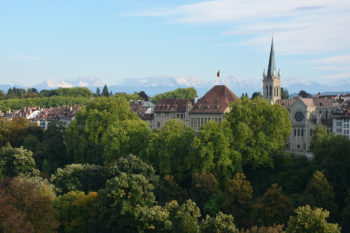Switzerland is an expensive country but there are ways for visitors to save money. Here’s an in-depth guide on how to travel Switzerland on a budget.
Crystal lakes, high alpine trails, verdant farmland, snowcapped peaks — Switzerland’s natural beauty has put it at the top of many bucket lists. The country also has a well-deserved reputation for being an expensive country. The mountain vistas will take your breath away, as will the prices.
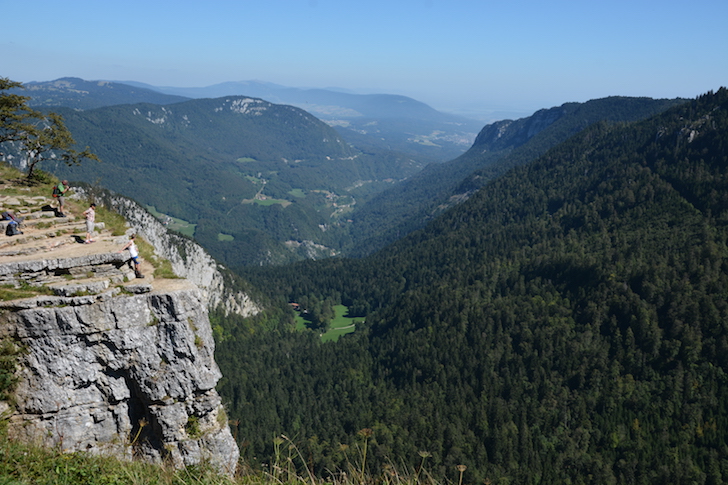
I’ve been making annual pilgrimage to Switzerland since 2014 and the country can be more affordable than at first glance. While it will never be a cheap backpacker destination, there are ways frugal travellers can save. Here’s how.
Note: As of 2019, 1 Swiss franc (CHF) = approximately 1 US dollar
1. Eating on budget in Switzerland
Self-catering is easy. All but the smallest villages will have a bakery and a grocery store with at least cold cuts, delectable Swiss cheeses, beer, wine, fresh fruits, vegetables and bread, along with ready-to-go meals like salads and sandwiches.
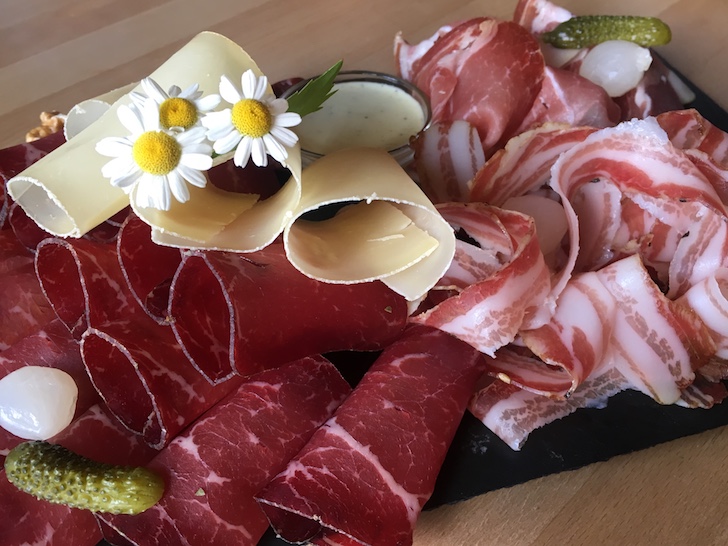
The two major grocery chains in Switzerland are Migros and Coop. They are everywhere but their regular prices are more expensive than budget-oriented Denner, Aldi and Lidl. However, all grocery stores, including Migros and Coop, will mark down 50% off fresh items that will expire in one or a few days, especially food like pre-washed salad, cheese, yoghurt, pastry, bakery and charcuterie. It’s a great deal and is perfectly good to eat.
Every major train station will have shops selling fresh sandwiches, pastries and salads that cost 5-8 CHF. It’s not uncommon to see people picnicking with beer or wine in public parks, squares, in the train and by lakes and rivers.
Often attached to the Migros and Coop is their self-serve cafeteria-style restaurant. Because of the large selection, good quality and value for money, these restaurants are a crowdpleaser, packed at lunchtime with locals of all ages and walks of life.
Migros Restaurant and Coop Restaurant usually have a fresh salad bar (price by weight), soup, sandwiches (8 CHF or less), smoothies, cakes and a hot station—head here if craving a hot meal. The daily special, a combo of meat, vegetables and rice/pasta/potato with a side salad or dessert, costs no more than 15 CHF. These restaurants often have free fountain water. Also look for their grab-and-go shops Migros Express, Migros Take Away and Coop ToGo.
Still searching for a cheap feed? Head to where the students are. Cafes, restaurants, bars, doner kebab shops and Asian takeaway that cater to university students are good value, as are the university canteens.
For sit down dining, small cafes and casual Swiss restaurants can be relied upon to have a few affordable, hearty traditional dishes. In Ticino, casual, convivial osterias and grottos serve up polenta and pasta. Elsewhere, a filling rosti, tarte flambee/flammkuchen, bratwurst, schnitzel plate, spatzle or kaseschnitte (a slab of bread topped with melted raclette cheese) is usually no more than 20-25 CHF. Tipping is not mandatory though diners can leave a few Swiss francs for good food service.
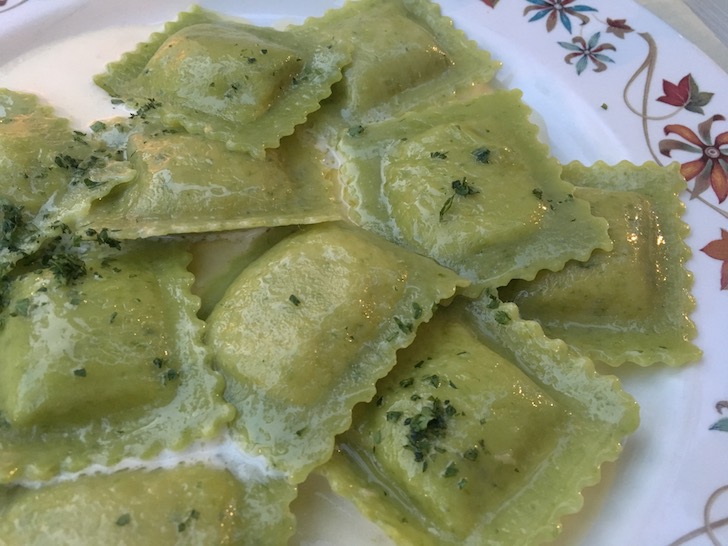
One thing that is difficult to save money on is coffee or tea. Whether at a formal cafe or takeaway, in Switzerland the average price for a cup is 5 CHF. If you can live without, it’s a significant saving.
Expect a glass of wine or beer at a restaurant to be 6 to 12 CHF. Save by buying it from the grocery. In Switzerland it’s legal to drink alcohol in public spaces, be it a park, beside a lake or on a train (just be tidy about it and don’t litter). A beer from the store is 1-2 CHF. Unfortunately Swiss wine is actually more expensive than some imports, hovering in the 12-22 CHF range. Find a bottle of decent Italian and Spanish wine for less than 10 CHF.
2. Water/wasser
Ever travel Italy or France? Then you know that at a restaurant, drinking water is not free and is relatively expensive. It’s not uncommon for a glass of wine to be cheaper than mineral water. Unlike other parts of Europe, many establishments in Switzerland offer tap water for the table and do not charge. Check before ordering.
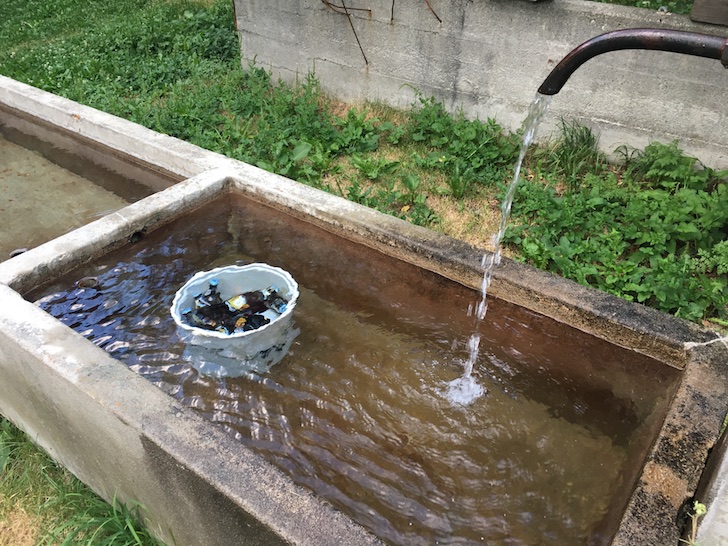
And since tap water in Switzerland is excellent, carry a reusable bottle. Cities like Zurich and Bern have fountains everywhere delivering clean drinking water—some are even historic (refill at the Kindlifresserbrunnen or child-eating ogre fountain in Bern). Alpine villages and hiking trails have free flowing spouts of refreshing mountain water. It’s safe to drink unless there’s a sign saying it is not potable.
3. Swiss transportation and travel cards
The Swiss transport system is one of the best in the world and travellers will no doubt find themselves using the trains, buses, trams, boats, funicular and cable cars. Transport is a main budgetary consideration when planning a vacation in Switzerland. For example, buy a ticket on the spot and a one-hour train ride from Zurich Airport to Bern (one-way, 2nd class) is 56 CHF (approximately 56 USD). Before you spend as much as your kidney would fetch on the black market, there are many offers available. It really is worthwhile to plan the itinerary in advance in order to determine which offer saves you the most.
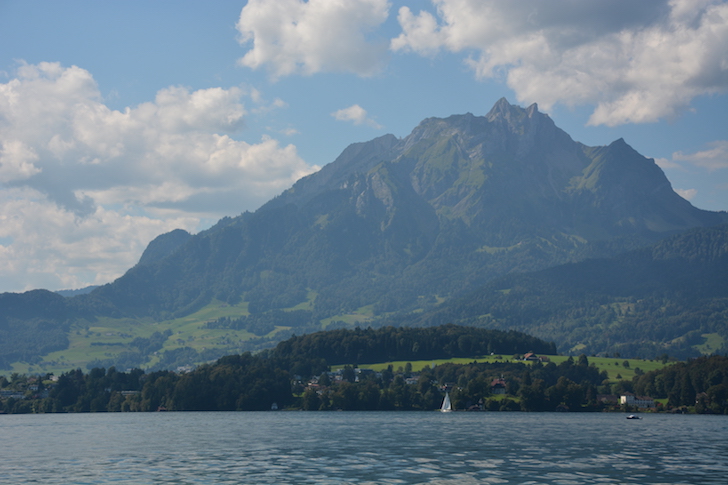
Firstly, many city and canton tourism boards give tourist cards that offer unlimited free use of public transport during the length of stay and discounts on attractions. For example, stay overnight in a hotel, hostel or campsite in Ticino and receive the Ticino Ticket. Perks include free public transport in Ticino from the time of check-in to midnight the day of check-out. The Montreux Riviera Card is a similar offer.
Get a Geneva Transport Card from your accommodation and enjoy unlimited free use of Geneva’s public transport network during the length of stay, including trains, buses, trams and boats (Mouettes Genevoises). They also have you covered when arriving into Geneva Airport: In the baggage claim hall, take a ticket from the “Billet Gratuit / Free Ticket” machine. It allows for 80 minutes of airport train, tram, bus or yellow-taxi boats to get you into the city centre.
Zurich’s card is available for a fee and includes transport, plus museums for free or at discount.
So my advice is to do an online search and investigate the tourism board websites for each destination for deals, tourist cards and perks. Interlaken, Lake Thun, Bern, Lausanne…
Read the fine print of what is included. Sometimes cable cars and trains up to the peaks are not covered, in which case it’s time to consider passes — there are many.
4. Switzerland travel pass
Travel passes are ideal for deeper exploration of popular regions. Take Jungfrau and Matterhorn for example.
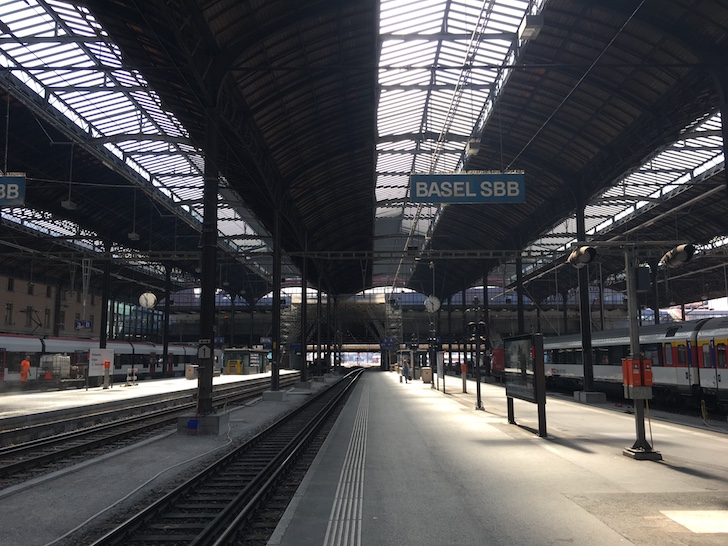
When it comes to SBB (Swiss national railway), Switzerland travel passes tend to be a good option for a short-stay tourist with a busy rail itinerary. Choose from buying a pass for consecutive days or a flex pass selecting a number of non-consecutive days per month. They include panorama trains like the Glacier Express and mountain excursions for free or at a discount, plus free admission to over 500 museums.
Those travelling with children under 16 should definitely get the complimentary Swiss Family Card, available by request. When the parent has a Swiss Travel System pass or ticket, children travel free of charge.
There are many pass options but don’t buy one without first considering the handy, flexible half-fare card.
5. The half-fare card “halbtax travelcard”
For travellers staying longer and hitting up multiple destinations, the half-fare halbtax travelcard is a good investment.
Halbtax gives half-price on almost all public transport, which includes ferries, trams, buses and cable cars. As of 2019, a one-month half-fare card is 120 CHF, one-year costs 185 CHF.
The halbtax travelcard can be purchased at train station service windows or ordered in advance online. You will need to present your passport and give a colour passport photo.
Do the math. Would it be worth it? If transport will be a big part of your experience (see #7 below), chances are it would be. As you design your trip, it’s dead easy to calculate the transport fares using the SBB app, which brings me to the next money saving tip.
6. Supersaver ticket on the SBB app
The SBB app is a smart, super useful tool. Users can check the up-to-date schedule, routes to the destination and scope out the expected level of occupancy. It’s also where to look for supersaver tickets, specific departure times that are marked down due to low volume, most often the times outside of peak rush hour.
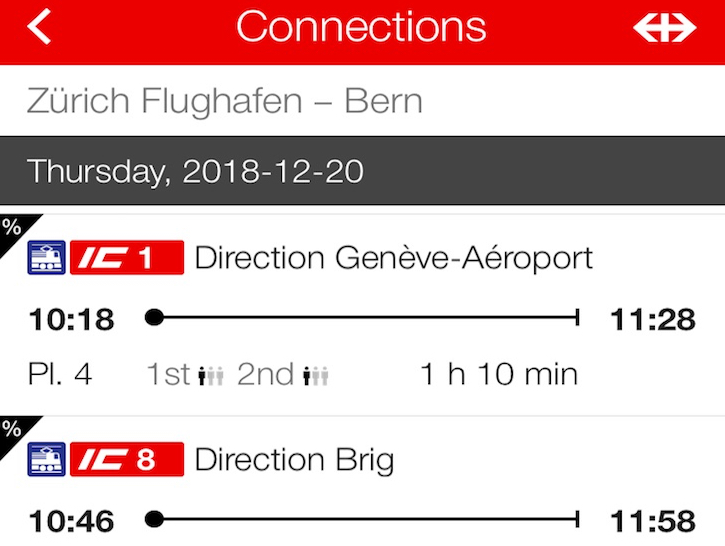
Look for the percentage symbol in the corner of the departure and select it to see the discounted price. If you are flexible on what time you go from Point A to Point B, the savings can be as much as 70% off and sometimes 1st Class is cheaper than 2nd. And if you have the halbtax card, that is 70% off of your half-price fare.
Purchase must be done through the app and once you buy it, you are committed to that specific departure time and route. Don’t miss that train! There’s a limited number of discounted tickets and the earlier you check, the more supersaver tickets are available. If you see a good one, don’t dawdle because it can be gone the next time you check.
7. Transportation is part of the experience
I’ve spilled a lot of digital ink on budget tips for Swiss transport because in Switzerland, transport IS part of the experience. The spectacular vistas can be enjoyed simply by using the regular network of trains, funiculars, mountain railways, buses, cable cars and ferries, just to name a few. No need for organised tourist excursions or hiring a car, doing it yourself is easy.
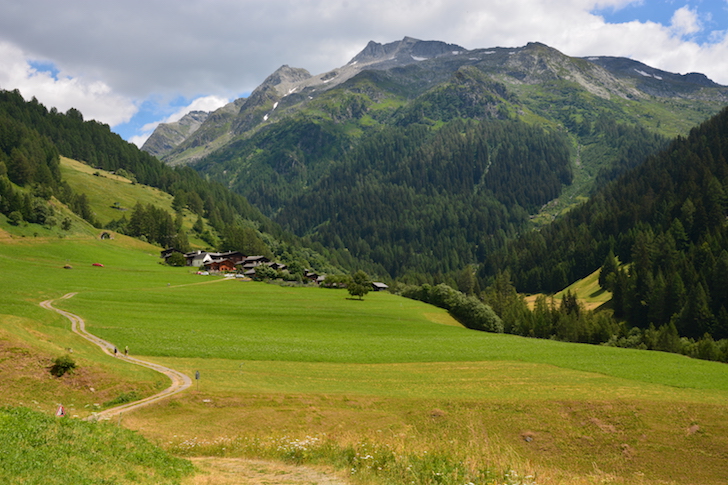
So use transport as a way to tour and sightsee. Instead of taking the train directly to Interlaken, combine it with a boat trip on the lake: Go to Thun and take the public ferry which crisscrosses stunning Thunersee (Lake Thun). Combine a ferry trip across Lake Lucerne with the cogwheel railway up Mt Rigi.
PostBus is a public bus system servicing more remote and rural regional areas. Not just a bus to go from Point A to B, they offer some wonderfully scenic routes and special tours in the summertime, when the high alp passes are open. For example, take the Grimsel–Nufenen–Gotthard–Susten Pass route and experience up to four jaw-dropping mountain passes in one day. The day trip includes a stop on the top of each pass to take in the view. Again, half-fare card applies too. If the entire route is out of your price range, just do one and combine it with hiking.
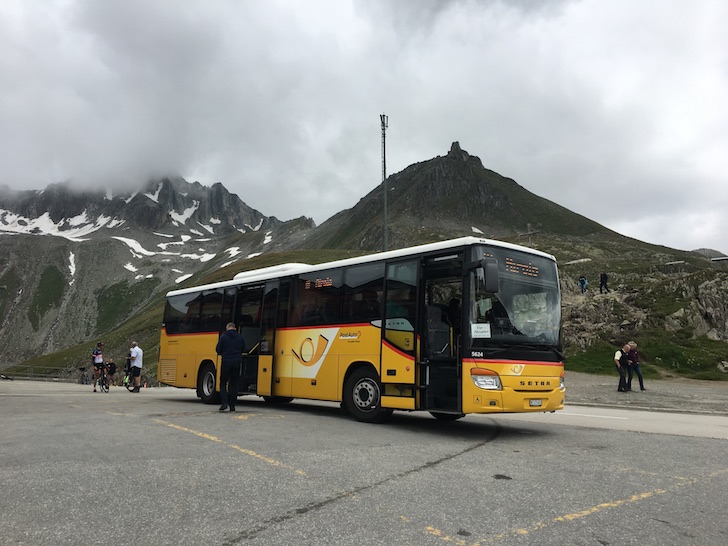
8. The great outdoors is free
As the saying goes, when in Rome, do as the Romans do. When in Switzerland, that means heading outdoors. This especially applies in the summer, when the only equipment you need is walking shoes or a swimsuit.
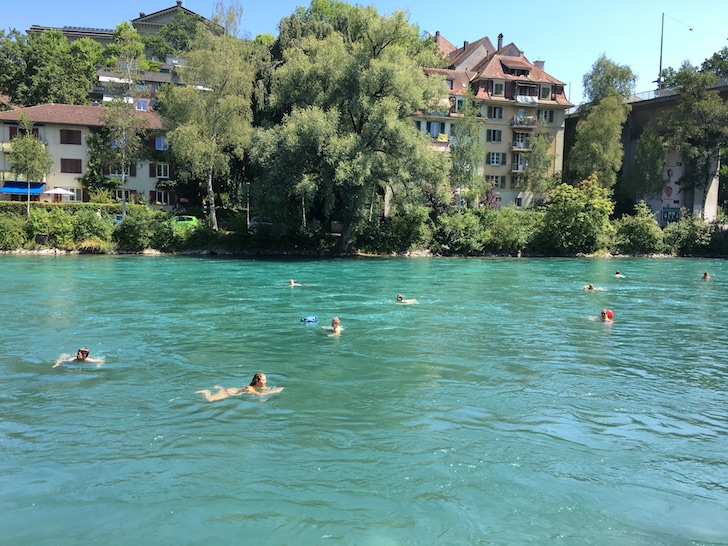
The country has over 65,000 km of marked hiking trails and many historic old towns and charming villages to explore. When it’s hot, the Swiss head to rivers and lakes for a refreshing swim. Hundreds flock to Bern’s Aare River daily for a fun float down the crystal clear turquoise waters. Head to the Marzili for change rooms, toilets, lockers, water float vendors, food stands and bars, as well as grassy lawns and platforms for sunbathing. Follow the path up river and join the crowds jumping in, floating back to the Marzili where you get out and do it all over again. Not confident swimming in moving water? The river feeds several free swimming pools here and at the Lorraine Bad.
Lake Zurich, Valle Verzasca, Lake Geneva, Lake Neuchatel, Lake Murten, Lago Maggiore…brave the cold waters or hang out beside the water, it’s free.
Many towns offer free walking tours, from the biggest city in Switzerland to Ernen, population 530. Some are non profit organisations, others are offered through the local tourism board.
Check out Free Walk Switzerland. Do an online search of your destination, for example “Interlaken free walking tour” to see what’s currently on offer. For small destinations, you may need to inquire what languages are available and book in advance.
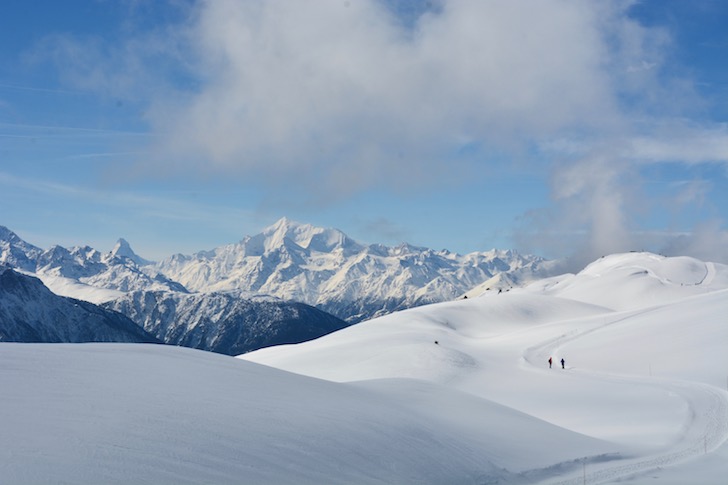
9. Cycling Switzerland
In Switzerland cyclists are spoiled with bike lanes, well marked paved and off-road trails and a bounty of route information online. Interested in casual excursions by bike? Here are several convenient options.
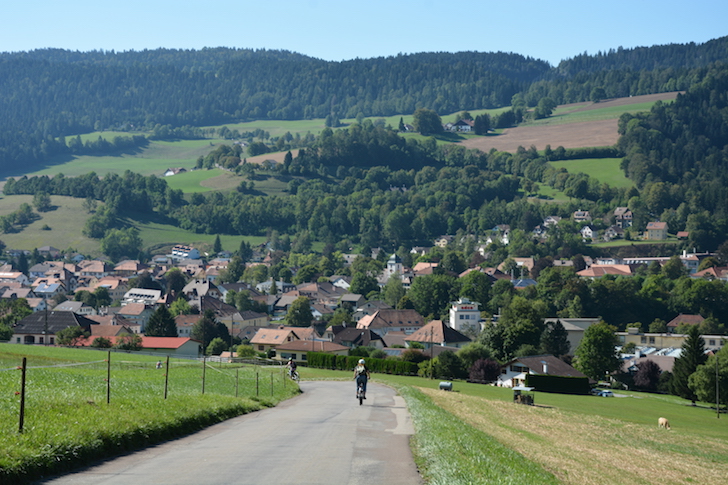
SBB has rentals and according to their website, there are 200 pick-up locations, including at 80 railway stations. The fleet is varied and there’s even child seats, bikes and trailers available. I’ve done some incredible e-bike excursions. For me, cycling up to Creux-du-Van and circumnavigating Lake Murten was well worth the expense of 50 CHF/day.
https://www.sbb.ch/en/station-services/auto-velo/rent-a-bike-high-season.html
https://www.rentabike.ch/en/bikes
Free bicycle rental programs like “Rollt” have fizzled out while others, like Geneveroule, which gives four hours free rental in Geneva, are still operating. It’s best to dig around before the trip to find the most up to date offering.
Not free but on the affordable side, PubliBike launched in 2018. With this bike/e-bike share network, get from Point A to Point B or do some sightseeing. Tourists who have not subscribed with the annual fee can use the QuickBike option. The first 30 minutes is 3 CHF and each additional minute is just 0.05, up to a 24-hour maximum of 20 CHF; an e-bike is 4.50 CHF for the first 30 minutes, each additional minute is 0.10 up to a 24-hour maximum of 40 CHF. The bike can be returned to any PubliBike stand. Unlike the free programs, this operates year round, 24/7. Registration is required beforehand, see details on https://www.publibike.ch
Thinking of bringing your own bicycle? As of 2018, Edelweiss allows the first sports equipment (maximum 23 kg) such as a bicycle, skis or snowboard you check in to be FREE of charge on all their flights.
Travel Switzerland on a budget: miscellaneous tips
Souvenirs: Eschew the fancy boxes of chocolate and head to Migros, where their Frey brand chocolate bars are excellent quality and affordable. The selection is overwhelming. The standard dark, milk and white chocolate bars come in a good value three-pack.
When to travel: Avoid peak travel periods. In July and August, popular tourist destinations swell on weekends and accommodation rates jump. Try to hit these places from Sunday to Thursday. Spring and Autumn can also be cheaper. September is an especially good time, as many of the high alpine trails and mountain passes are still open.
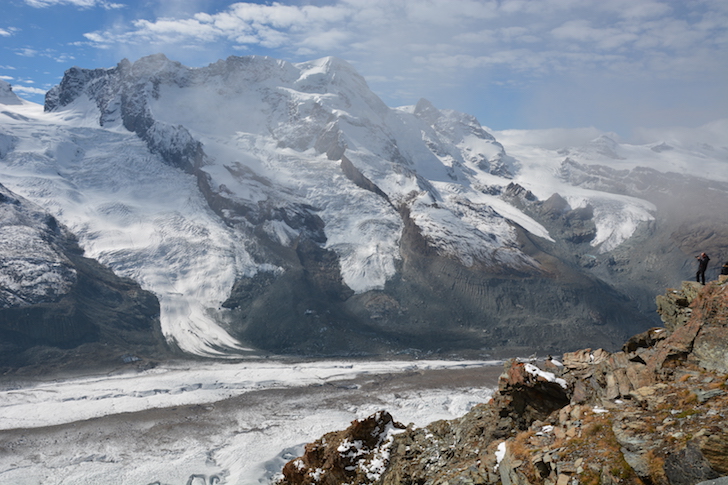
Feel festive: Switzerland has interesting free festivals year round ranging from traditional to hipster. Big city festivals like Basel Carnival are renowned but the events in small villages and towns are more intimate. Investigate if there’s something special happening during your trip. The calendar year is packed with cheese festivals (free samples!), wine festivals (cheaper wine!), alpine cattle procession (moving the cows up into the mountains in May, down in September), Ascona Jazz Festival, traditional wrestling, Heren cow fighting, Bern’s onion festival (Zibelmarit) and Christmas markets just to name a few.
Free museums: Major cities have a number of free museums and parks.
Experience team spirit: The Swiss love their football clubs and the fans are passionate. Every city and major town in Switzerland has a team and the cheapest seats are quite affordable. In stark contrast to the price gouging in stadiums in Canada and the US, beer at Swiss arenas/stadiums is a reasonable 5-6 CHF.
Have any tips on how to travel Switzerland on a budget? Share in the comments.
All photos © Cindy Fan
